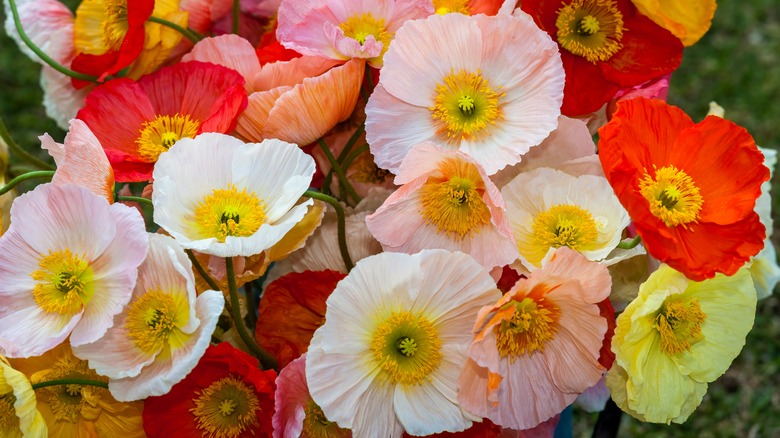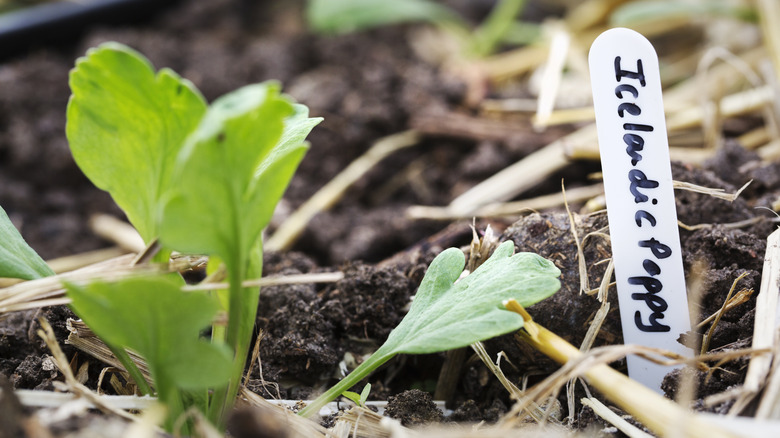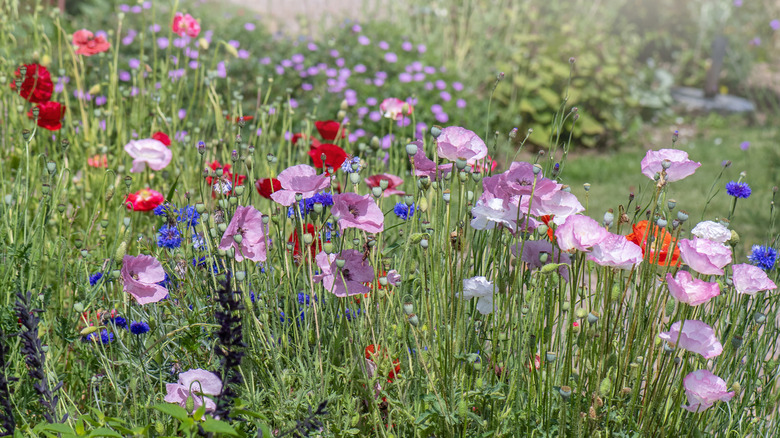Tips & Tricks For Growing Poppies From Seed To Fill Your Yard With Blooms
When I started working at Sunny Meadows Flower Farm, I knew I would love the dahlias and ranunculus, but the poppies took me by surprise. I was lucky enough to watch them grow from seedling to flower. They looked like long-neck dinosaurs with the way their fuzzy heads hung on tall, skinny necks. Then they shed their protective shells, and the blooms looked like they were made of tissue paper, delicate and vibrantly colorful. They're now one of my favorite flowers.
Iceland Poppies are tricky to grow. Their tiny seeds are easy to lose or bury in a layer of vermiculite, and they are one of the few poppy varieties that do best when starting in a seed tray. However, the other popular species, such as Breadseed, California, and Shirley, prefer to be directly seeded. Even if you follow the best way to start seeds indoors, you aren't likely to have much luck with poppies. But don't worry; it is much easier to direct seed poppies into your yard, anyway!
To direct seed, scatter the poppy seeds on the surface of the soil and barely cover with a light dusting of sand or just leave them on top of the ground. Then, it's important to keep them moist, which will hopefully be an easy task in early spring.
Why most poppies prefer direct seeding
How and when to direct sow seeds in your garden depends on the plants. Poppies, in particular, do best when direct seeded for a few reasons. First, they bloom in spring, attracting birds and bees with their bright colors and pollen, then they start producing seed pods by summer. Because of this bloom time, their seeds need to experience cold and wet conditions to germinate. The best time to spread the seeds depends on which hardiness zone you live in. Warmer climates should aim for a fall planting while cooler climates should try to plant in spring before the last frost. Starting your poppies indoors makes it more difficult to give them the cold period they prefer.
The second reason that you should direct seed poppies is their taproot. A taproot is like an artery. It extends deep into the soil and is the main source of water and nutrients for the rest of the plant as more roots grow from it. Poppies start developing their taproot right away, and any damage to it could be fatal. Because growing seeds in a seed tray requires you to transplant the seedlings, the risk of damaging the taproot is high. If you need to start them indoors, try planting in peat pots that can be popped directly into the ground.
Caring for poppy seedlings
When direct seeding on the surface, it's less important to count seeds or measure spacing. It's like you're tossing out a handful of chances, knowing that not all of them will be a success. Once the seedlings come up, though, you will have to thin them out. Germination happens within seven to 28 days, and then it's best to start thinning them before they are six inches tall. Poppies only need between six and eight inches of space between them, so you can get a few flowers in a small bed. If it hurts your soul to pull healthy seedlings out of the ground to throw them away, you could also try planting them somewhere else in the garden if you are very careful with their taproots. On another farm I worked for, we tossed out handfuls of a wildflower mix that included poppies. So many of the seeds germinated that it took significantly longer to thin out the beds than it did to start the seeds!
Tips for growing happy and healthy poppies for a garden full of color include watering low and watching out for pests. On the flower farm, we water with drip irrigation to avoid downy mildew and powdery mildew — diseases that thrive on wet plant material. You can do your best to water at the base of flowers whenever possible and avoid overwatering. They may like the cold and damp to germinate, but they need well-draining soil once they start growing.


